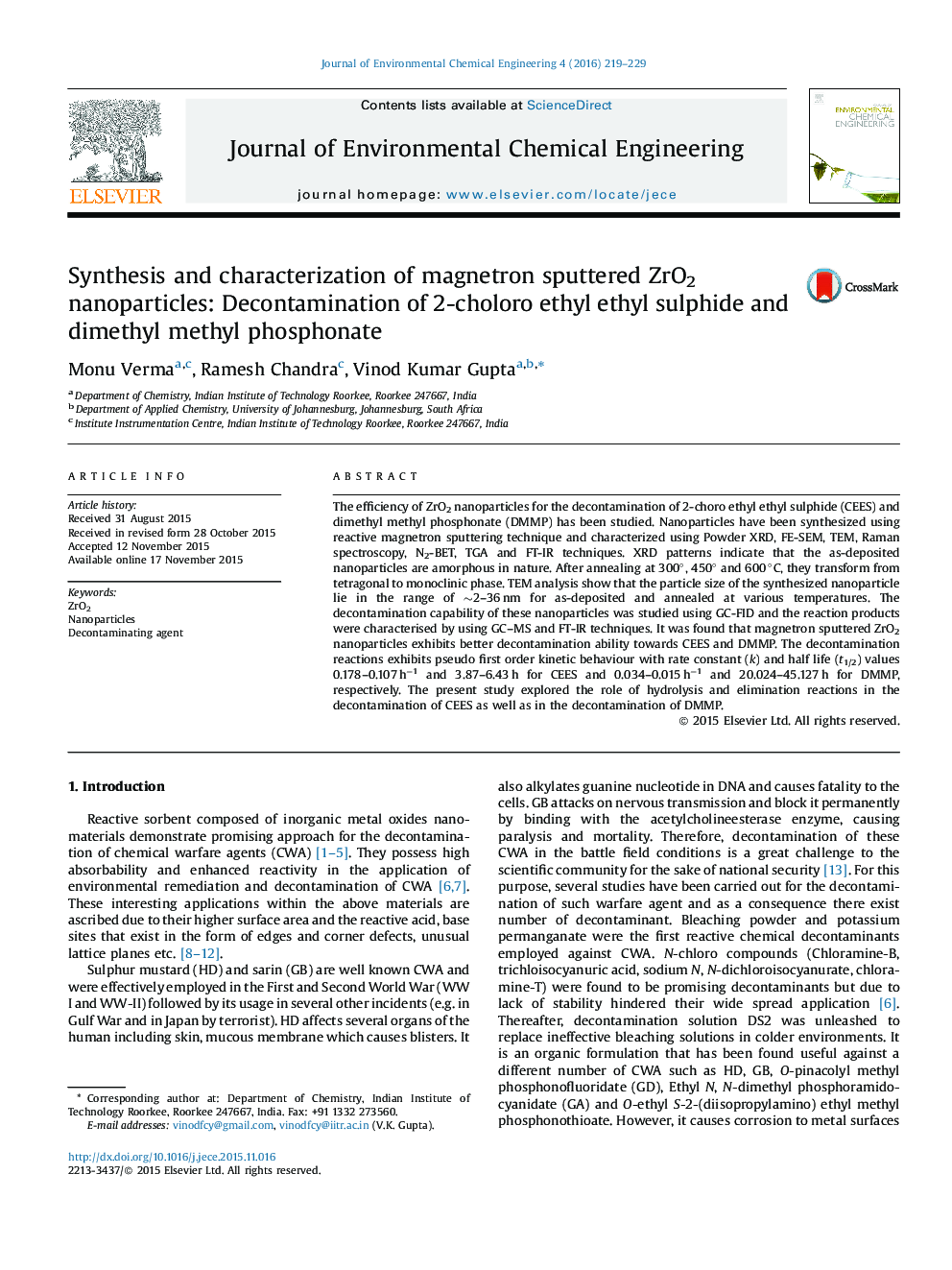| کد مقاله | کد نشریه | سال انتشار | مقاله انگلیسی | نسخه تمام متن |
|---|---|---|---|---|
| 221878 | 464267 | 2016 | 11 صفحه PDF | دانلود رایگان |
• ZrO2 nanoparticles were synthesized using reactive magnetron sputtering technique.
• CEES and DMMP were used as model toxicants for the decontamination reaction.
• The half life (t1/2) values For CEES and DMMP are 3.87 h and 20.024 h respectively.
• Decontamination occurs through hydrolysis and elimination reactions.
• The magnetron sputtered ZrO2 nanoparticles possess higher surface area (∼119 m2/g).
The efficiency of ZrO2 nanoparticles for the decontamination of 2-choro ethyl ethyl sulphide (CEES) and dimethyl methyl phosphonate (DMMP) has been studied. Nanoparticles have been synthesized using reactive magnetron sputtering technique and characterized using Powder XRD, FE-SEM, TEM, Raman spectroscopy, N2-BET, TGA and FT-IR techniques. XRD patterns indicate that the as-deposited nanoparticles are amorphous in nature. After annealing at 300°, 450° and 600 °C, they transform from tetragonal to monoclinic phase. TEM analysis show that the particle size of the synthesized nanoparticle lie in the range of ∼2–36 nm for as-deposited and annealed at various temperatures. The decontamination capability of these nanoparticles was studied using GC-FID and the reaction products were characterised by using GC–MS and FT-IR techniques. It was found that magnetron sputtered ZrO2 nanoparticles exhibits better decontamination ability towards CEES and DMMP. The decontamination reactions exhibits pseudo first order kinetic behaviour with rate constant (k) and half life (t1/2) values 0.178–0.107 h−1 and 3.87–6.43 h for CEES and 0.034–0.015 h−1 and 20.024–45.127 h for DMMP, respectively. The present study explored the role of hydrolysis and elimination reactions in the decontamination of CEES as well as in the decontamination of DMMP.
Figure optionsDownload as PowerPoint slide
Journal: Journal of Environmental Chemical Engineering - Volume 4, Issue 1, March 2016, Pages 219–229
